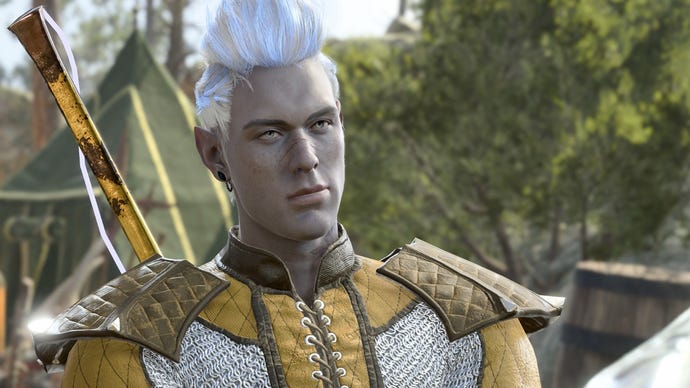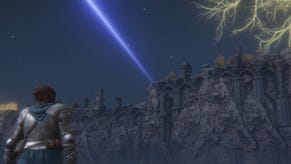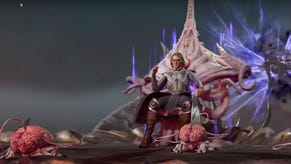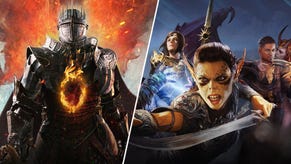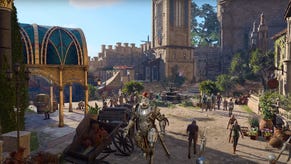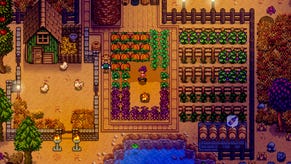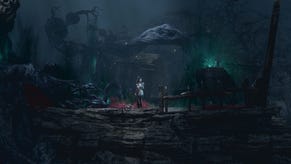The best Baldur's Gate 3 multiclass options
Going the BG3 multiclass option gives you some powerful builds
The best Baldur's Gate 3 multiclass options really depend on how unhinged you want your characters to be. The overwhelming range of abilities means you can pull off any combination that takes your fancy, or if you’re just getting a feel for how classes work, you can take the safe route and combine classes based on their skill modifiers.
The most important thing to consider when deciding to multiclass is what you actually want from the other class. Larian isn’t exaggerating when they say you’ll miss out on high-level class features.
There just aren’t enough encounters to fully level two classes, not that we’ve found at least, but good multiclassing is about getting the abilities you want – not leveling both classes as much as possible.
Baldur’s Gate 3 multiclass
Baldur’s Gate 3 multiclass – Paleric (Paladin + Cleric)
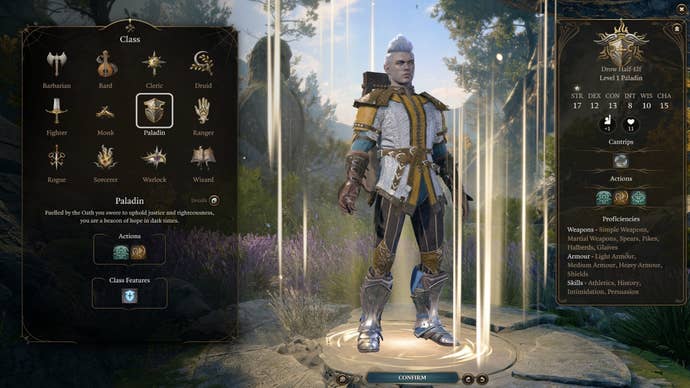
This is a pretty tame pick, but the two work together pretty well and give your cleric something to do when they aren’t buffing the party.
- Class levels: Paladin level: 2 or 4; Cleric level at least 6
- Attributes: Wisdom, then strength
- Best abilities: Divine Smite, Lay on Hands, Protection
Paladin gives you extra options for attacking with better weapons and lets you equip better armor, which is handy for keeping your squishy healer alive in tougher fights. A lot of Paladin multiclass builds stop at 2 just to get Divine Smite, and while that’s great, I got a lot of use from Lay on Hands. It’s like Lesser and Greater Restoration, but without using a spell slot – handy for a Cleric, whose use is almost entirely wrapped up in spell slots.
We recommend leveling your Paladin to level 2 first and then switching to your Cleric until at least level 4. Switch back to the Paladin if you want to get Lay on Hands, or just stick to your Cleric from then on.
You’re free to pick whatever Cleric subclass and skills fit your playstyle, though we prefer the more offensive-focused Tempest Cleric or the heavy-hitting War Domain Cleric as some nice complements to the Paladin’s skills.
Baldur’s Gate 3 multiclass – Battlerserker (Battle Master + Berserker)
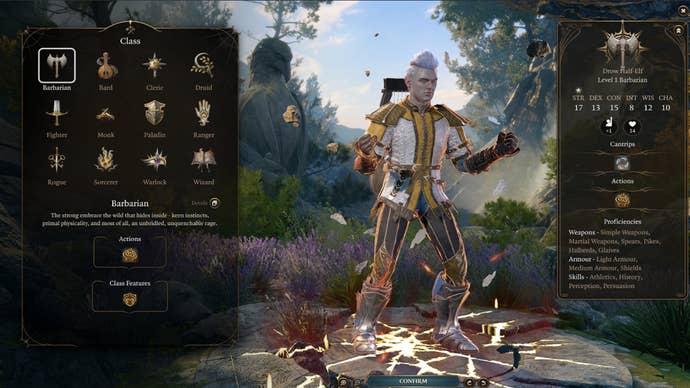
If you mix the Fighter’s Battle Master subclass and the Barbarian’s Berserker, you end up with a mighty fighter who can manipulate enemies and provide a bit of support amid all the smashing and bashing.
- Class levels: Berserker level 5 or 6; Battle Master level 3
- Attributes: Strength, Constitution
- Best abilities: Action Surge, Feinting Attack, Menacing Attack
Berserker is a pretty straightforward class already. You hit things really hard and then you hit them again. Battle Masters do the same, but their Maneuvers come with additional effects – inflicting fear, for example, or gaining Advantage over an enemy. You can pick three after choosing Battle Master as your subclass, so feel free to ignore it from then on and level Berserker.
Action Surge and your Berserker’s rage charges are the most important parts of this setup. Action Surge lets you take an extra action, and rage powers up your hits while buffing your resistance as well.
Baldur’s Gate 3 multiclass - Barleric (Bard + Cleric)
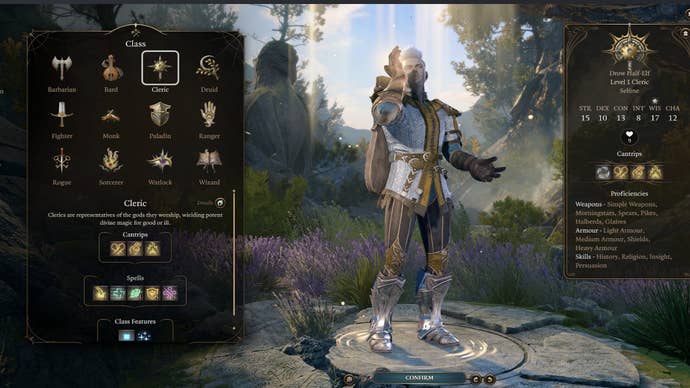
Sure, they have nothing in common from a stat perspective, but combining Bard and Cleric gives your party a potent support character with broad access to a variety of spells. There’s also the potential to specialize as pure support or a blend of magical offense and party buffing. We’re starting with a War Cleric and Swords Bard.
- Class levels: Bard level 3, Cleric level 6
- Attributes: Wisdom, Charisma
- Best abilities: War God’s Blessing, Slashing Flourish, Bardic Inspiration, Guiding Bolt
War Clerics get charges they can spend to pull off extra attacks, which is handy considering the class’ proficiency with martial weapons, while Slashing Flourish targets multiple foes. War God’s Blessing provides a hefty buff to the targeted ally’s next attack, and Bardic Inspiration lays on even more damage. The latter is a bonus action, so you could use both in one turn and power up your hard-hitting party members.
Guiding Bolt is there to give an ally advantage as well, but aside from that, you’ve got room to specialize with spells. You could opt for debuff options, such as Blind, Silence, or Sleep, or use Divine Favor to imbue your attacks with extra Radiant power.
Baldur’s Gate 3 multiclass – Elemental Spore Monk (Circle of Spores Druid + Way of the Elements Monk)
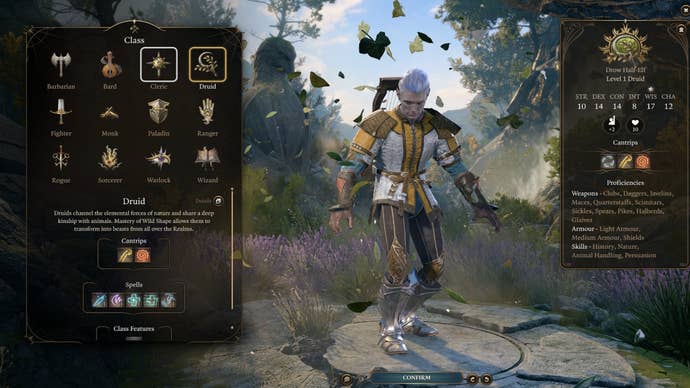
The biggest problem that Circle of Spores players are having is that their druid doesn’t deal enough damage, so I paired one with a Way of the Four Elements monk and walked away pretty happy with the results.
- Class levels: Druid level 6; Monk level 3
- Attributes: Wisdom, Strength
- Best abilities: Fungal Infestation, Water Whip, Harmony of Fire and Water
Way of the Four Elements gives your Spores Druid some extra utility aside from just making mushroom zombies. You’ve got your usual monk skills up to level three and the chance to reduce ranged damage with a handy reaction. I found a lot of use with Water Whip, since it brings enemies closer and makes it easier to use your spores on them. Making them prone is a nice side effect as well.
You’ve also got your standard range of druid spells and transformation options, with highlights including Shillelagh – bonus points for being a cantrip – Sleet Storm, and Plant Growth for a combination of damage and debuffs.
Baldur’s Gate 3 multiclass – Storm Sorlock (Storm Sorcerer + Warlock)
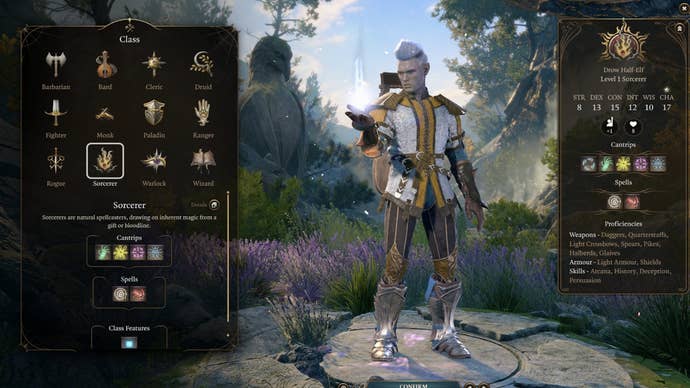
Tempest Cleric and Storm Sorcerer is a popular combination, but I opted to diversify slightly and use the Archfey Warlock instead for a bit of something different.
- Class level: Warlock level 3; Storm Sorcerer level 6 or higher
- Attributes: Charisma, Wisdom
- Best abilities: Eldritch Blast, Heart of the Storm, Distant Storm, Careful Spell, Sorcerer spells
Storm Sorcerers cover the battlefield with lightning and ice and can make water to electrify enemies over broad spaces. It’s one of the most powerful magic subclasses, and pairing it with Warlock gives you a bit of extra utility that won’t take up spell slots. Eldritch Blast is one of the most useful skills in the game, and even at low Warlock levels, you still get to customize its bonus effects.
We opted for Archfey to get the extra charm and fear effects without tying them to critical hits, like the Old One subclass does, and we recommend the Tome pact unless you have a really good weapon that you just don't want to part with.
Baldur’s Gate 3 multiclass - Beastly Thief (Ranger + Rogue)
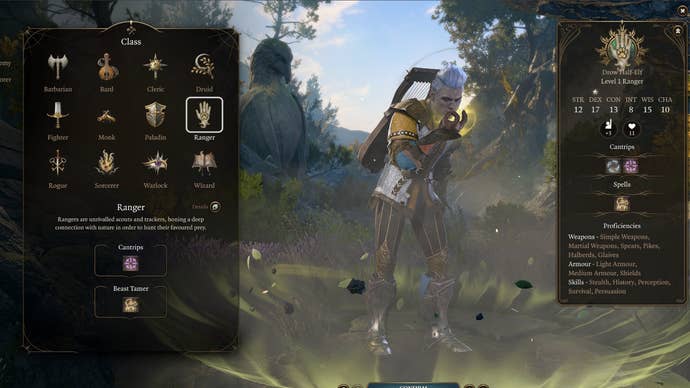
Rogue and Ranger just fit so well together, and if you opt for the Beast Master Ranger, you even get an extra party member for your trouble.
- Class levels: Rogue level 9; Beast Master level 3
- Attribute: Dexterity, Intelligence
- Best abilities: Fast Hands, Supreme Sneak, Spike Growth, Ensaring Strike
Go ahead and level your Beast Master to 3 first, so you can get your companion and focus on the rogue. The Beast Master’s companion is essentially an extra party member that can act as a tank, attacker, or debuffer. This level split means you miss out on some of the extra companion features – stronger attacks, mainly – but they’re mostly here to deal extra damage or draw enemy attention anyway.
The Thief subclass gives your Rogue an extra sub-action with Fast Hands, which means a second attack, a lil’ shove, or a chance to use a healing item in a pinch. Supreme Sneak does away with chances of being observed until you attack, which is particularly handy when you need an advantage roll.
If you're looking for some more help, check out our Baldur's Gate 3 walkthrough. Just getting started? Take a glance at our tips for the best classes and subclasses for beginners, and the must-have party members if you want to optimize every interaction.
